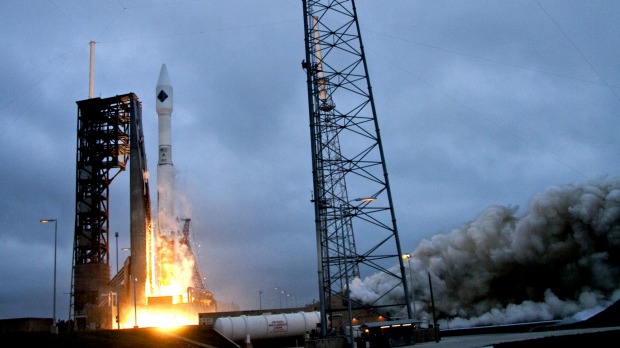-
Tips for becoming a good boxer - November 6, 2020
-
7 expert tips for making your hens night a memorable one - November 6, 2020
-
5 reasons to host your Christmas party on a cruise boat - November 6, 2020
-
What to do when you’re charged with a crime - November 6, 2020
-
Should you get one or multiple dogs? Here’s all you need to know - November 3, 2020
-
A Guide: How to Build Your Very Own Magic Mirror - February 14, 2019
-
Our Top Inspirational Baseball Stars - November 24, 2018
-
Five Tech Tools That Will Help You Turn Your Blog into a Business - November 24, 2018
-
How to Indulge on Vacation without Expanding Your Waist - November 9, 2018
-
5 Strategies for Businesses to Appeal to Today’s Increasingly Mobile-Crazed Customers - November 9, 2018
Liftoff: 1st US shipment in months flying to space station
Orbital ATK hopes to complete the first successful delivery of cargo from US soil since April, the last time a Dragon reached the station.
Advertisement
Orbital ATK (NYSE:OA), a global leader in aerospace and defense technologies, successfully launched its Cygnus spacecraft today aboard a United Launch Alliance (ULA) Atlas V launch vehicle with approximately 7,700 pounds (3,500 kilograms) of cargo for the crew aboard the International Space Station (ISS), beginning the company’s fourth operational cargo resupply mission for NASA.
“Santa is on his way!”
To NASA’s relief, the weather cooperated after three days of high wind and cloudy skies that kept the Atlas V rocket firmly on the ground.
Just before liftoff, Bruno urged, “Everyone cross your fingers and think happy weather thoughts”. Ecstatic launch controllers applauded, shook hands and hugged one another.
“It’s great to be back in space and have Cygnus up there”, Frank Culbertson, president of Obital ATK’s Space Systems Group, told reporters afterward.
At a prelaunch news conference earlier this week, Kirk Shireman, NASA’s ISS program manager, called the explosions “growing pains” in what he said was “a transition period”. Forecasters give 40 percent odds for the planned 4:44 p.m. liftoff. Vern Thorp, program manager for NASA missions at ULA, said in a pre-launch interview on NASA TV that ULA switched from automated to manual monitoring of wind conditions, and when it monitored wind conditions, to avoid triggering a hold by a wind gust that did not pose an actual hazard to the launch.
Like Orbital ATK’s Antares, ULA’s Atlas makes use of Russian engines, but it’s proven to be a reliable rocket for a wide variety of missions – most recently to put an advanced Global Positioning System satellite into orbit for the U.S. Air Force. Its next cargo ship, launched two months later, ended up in the Atlantic following a failure of its Falcon rocket.
Orbital ATK’s Enhanced Cygnus is redesigned with more room for cargo.
It was followed eight months later by a SpaceX rocket explosion, and the consecutive accidents effectively shut off the flow of USA supplies to astronauts in orbit. Once they arrive, the station’s astronauts will try them out as wearable aids for in-space operations.
Orbital’s Cygnus cargo carrier is full of food, clothes, toiletries, spacewalking gear, science experiments and Christmas presents.
This is the first time that the United Launch Alliance’s Atlas V has served the space station.
United Launch Alliance builds and flies the powerful Atlas V, a workhorse normally used to hoist satellites for the Air Force and others.
Advertisement
In October 2014, an Orbital Antares rocket packed with thousands of pounds of supplies exploded seconds after takeoff, marking the first catastrophic failure since private companies began resupplying the orbiting outpost in 2010. NASA’s other commercial supplier, SpaceX, is also stuck on Earth.




























